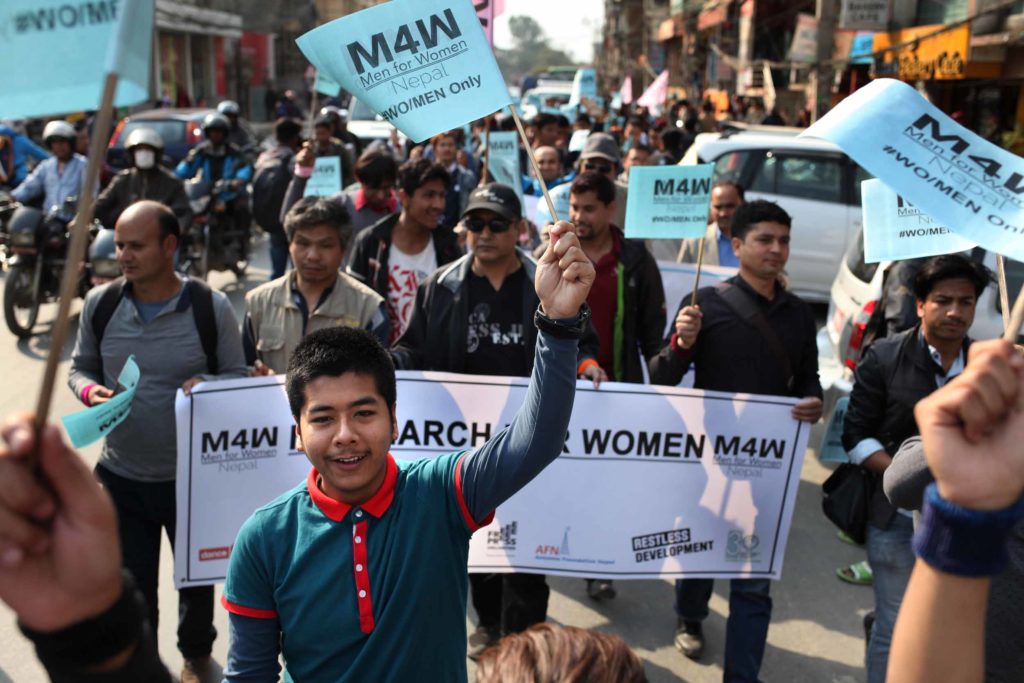Gender and Media Resource Guide
Media play an essential role in working towards gender equality in society. This Gender and Media Resource Guide is the place to find everything you need to promote gender equality in and through media, including:
- Gender equality in media content
- Gender equality in the media sector
- Campaigning and advocacy
- Gender mainstreaming
Each of the following sections presents practical tools and background information about gender and media, as well as examples of successful approaches.
Explore the following topics:

An introduction to basic gender concepts and information about why gender and media matter.

Gender equality in media content
Worldwide, women are underrepresented in media and often portrayed in stereotypical ways. There is an enormous potential for media to show a wider variety of roles and behaviors of people of all genders, thereby challenging gender inequalities and expanding the range of people society looks up to as role models.
Explore this section to find out about different strategies to promote gender equality in media content.

Gender equality in the media sector
Gender inequality is clearly visible in the media sector and journalism profession. Women are usually a minority in media organisations, especially in high-level and decision-making positions. Women journalists face unique barriers and safety risks.
Explore this section to find out more about different strategies related to gender in the media sector and workplace.

Campaigning and advocacy are crucial to achieving the legislative and policy environments necessary for gender equality in the media.
Explore this section to find out about different mechanisms and movements being used around the world.

When working on a media development project, it is crucial to mainstream gender within its design, implementation and evaluation.
Explore this section to find out how gender mainstreaming can address the concerns and needs of both men and women within every stage of the project cycle.
Evidence base: Gender equality
| Source | Year | Country | Organisation | Author |
|---|---|---|---|---|
| Global Media Monitoring Project 2015 | 2015 | Global | WACC | Macharia, S. |
| The Stories Women Journalists Tell; Women in Media in South Asia | 2014 | Afghanistan, Bangladesh, Bhutan, India, Nepal, Pakistan, Sri Lanka | International Federation of Journalists (IFJ) | Seshu, G. |
| Content Analysis: Measuring the Success of Journalism Capacity Building | 2014 | Global | Deutsche Welle Akademie | Spurk, C. & Lublinski, J. |
| The Routledge Companion to Media and Gender | 2014 | Global | Carter C. et al. | |
| Making Waves: Media’s Potential for Girls in the Global South | 2014 | Global | BBC Media Action | Sugg, C. |
| Violence and Harassment against Women in the News Media: A Global Picture | 2014 | Global | International Women’s Media Foundation (IWMF) | Barton, A. & Storm, H. |
| Community Radio, Gender and ICTs in West Africa: A Comparative Study of Women’s Participation in Community Radio Through Mobile Phone Technologies | 2013 | Guinea, Liberia, Sierra Leone | Nokoko, Institute of African Studies | Fortune, F. & Chungong, C. |
| Does Gender Determine Journalists’ Professional Views? A Reassessment Based on Cross-National Evidence | 2012 | Australia, Austria, Brazil, Bulgaria, Chile, China, Egypt, Germany, Indonesia, Israel, Mexico, Romania, Russia, Spain, Switzerland, Turkey, Uganda | Hanitzsch, T. & Hanusch, F. | |
| Global Report on the Status of Women in News Media | 2011 | Global | International Women’s Media Foundation (IWMF) | Byerly, C.M. |
| Community Media and Women: Transforming Silence into Speech | 2006 | Global | Pavarala, V. et al. | |
| Gender in the Information Society: Emerging Issues, Asia-Pacific Development Information Programme, Bangkok | 2006 | Global | United Nations Development Programme (UNDP) | Gurumurthy, A. et al. |
